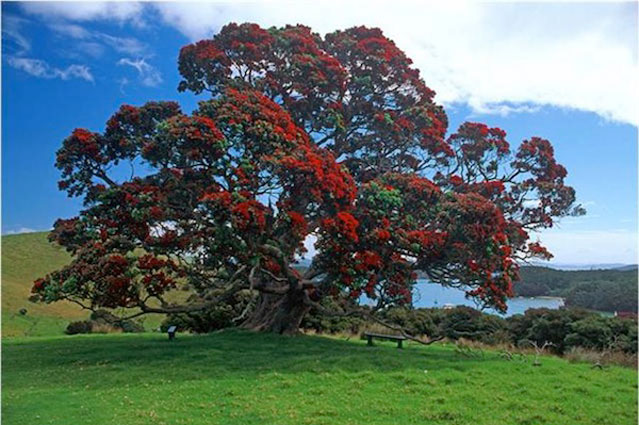Pohutakawa

The Pohutukawa tree with its crimson flowers has become an established part of the New Zealand Christmas tradition. This iconic Kiwi Christmas tree, which is often featured on greeting cards and in poems and songs, has become an important symbol for New Zealanders at home and abroad.
Pohutukawa and its cousin Rata also hold a prominent place in Maori tradition. Legends tell of Tawhaki, a young Maori warrior, who attempted to find heaven to seek help in avenging the death of his father. He fell to earth and the crimson flowers are said to represent his blood.
History
In 1833 the missionary Henry Williams described holding a service under a “wide spreading pohutukawa”. The first recorded reference to the pohutukawa as a Christmas tree came in 1867 when the Austrian geologist Ferdinand von Hochstetter noted that settlers referred to it as such. The pohutukawa, he observed, “about Christmas are full of charming blossoms, the settler decorates his church and dwellings with its lovely branches”. Other 19th-century references described the pohutukawa tree as the Settlers Christmas tree and Antipodean holly.
In 1941 army chaplain Ted Forsman composed a pohutukawa carol in which he made reference to “your red tufts, our snow”. Forsman was serving in the Libyan Desert at the time, hardly the surroundings normally associated with the image of a fiery red pohutukawa tree. Many of his fellow New Zealanders, though, would have instantly identified with the image.
